Topics:
1. Using Decorators
2. Using multiple Decorators on a single function
3. Using Decorators with parameters
4. Using a Decorator for multiple functions
5. Using functools.wraps
6. Using Decorators on Class methods
7. Call Method
8. Defining a Decorator Class
1. Using Decorators
>>Return to Menu
Decorators change the behaviour of existing functions or Classes. Decorator is any callable Python object that is used to modify a function or a Class.
def decorator_div(func):
def wrapper(a,b):
if a < b:
a,b = b,a
return func(a,b)
return wrapper
@decorator_div
def div(a,b):
return a/b
#div = div_decorator(div)
print(div(2,4))
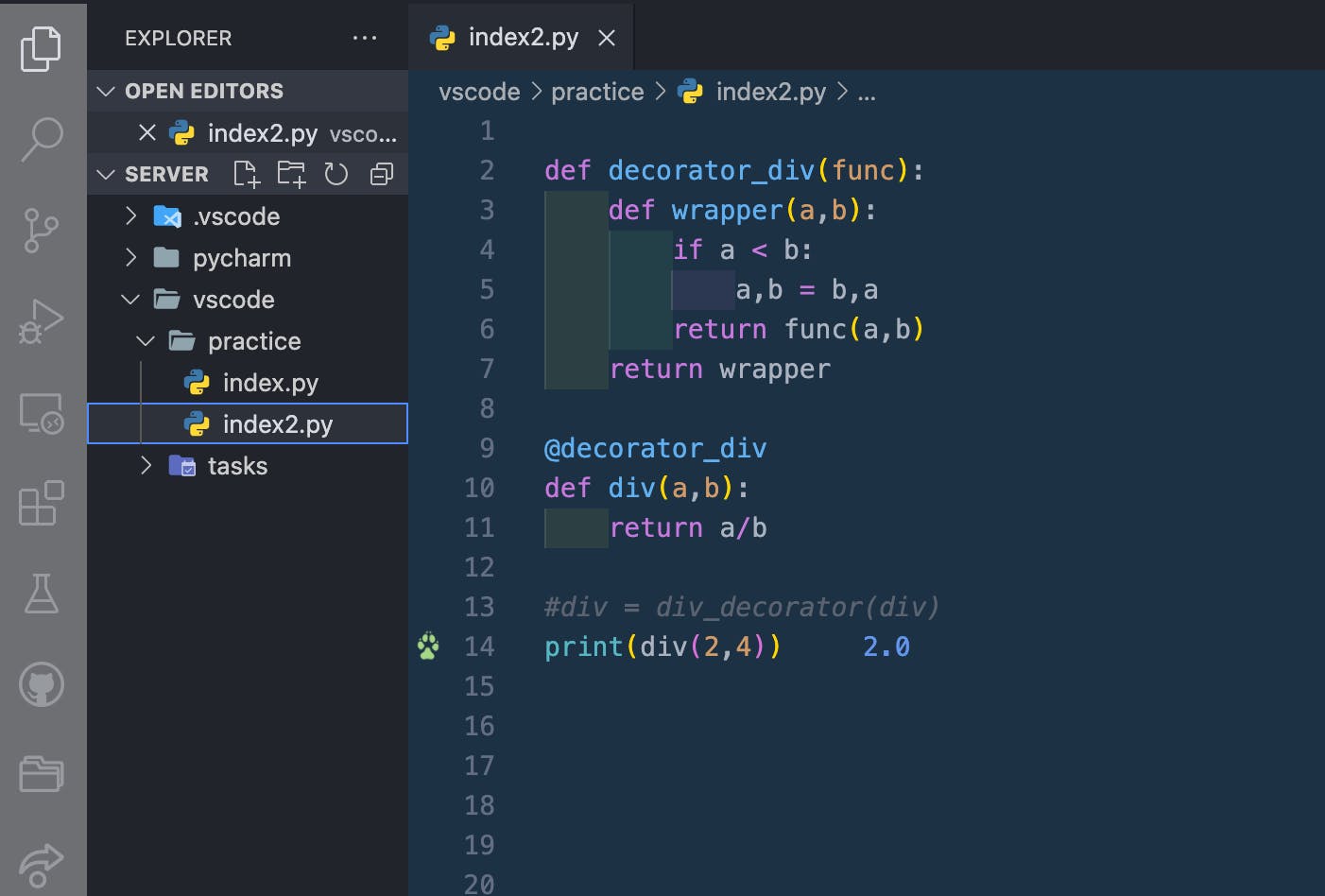
2. Using multiple Decorators on a single function
>>Return to Menu
def split_div(func):
def wrapper():
str = func()
return str.split()
return wrapper
def upper_div(func):
def wrapper2():
str2 = func()
return str2.upper()
return wrapper2
@split_div
@upper_div
def greeting():
return "good morning"
#div = div_decorator(div)
print(greeting())
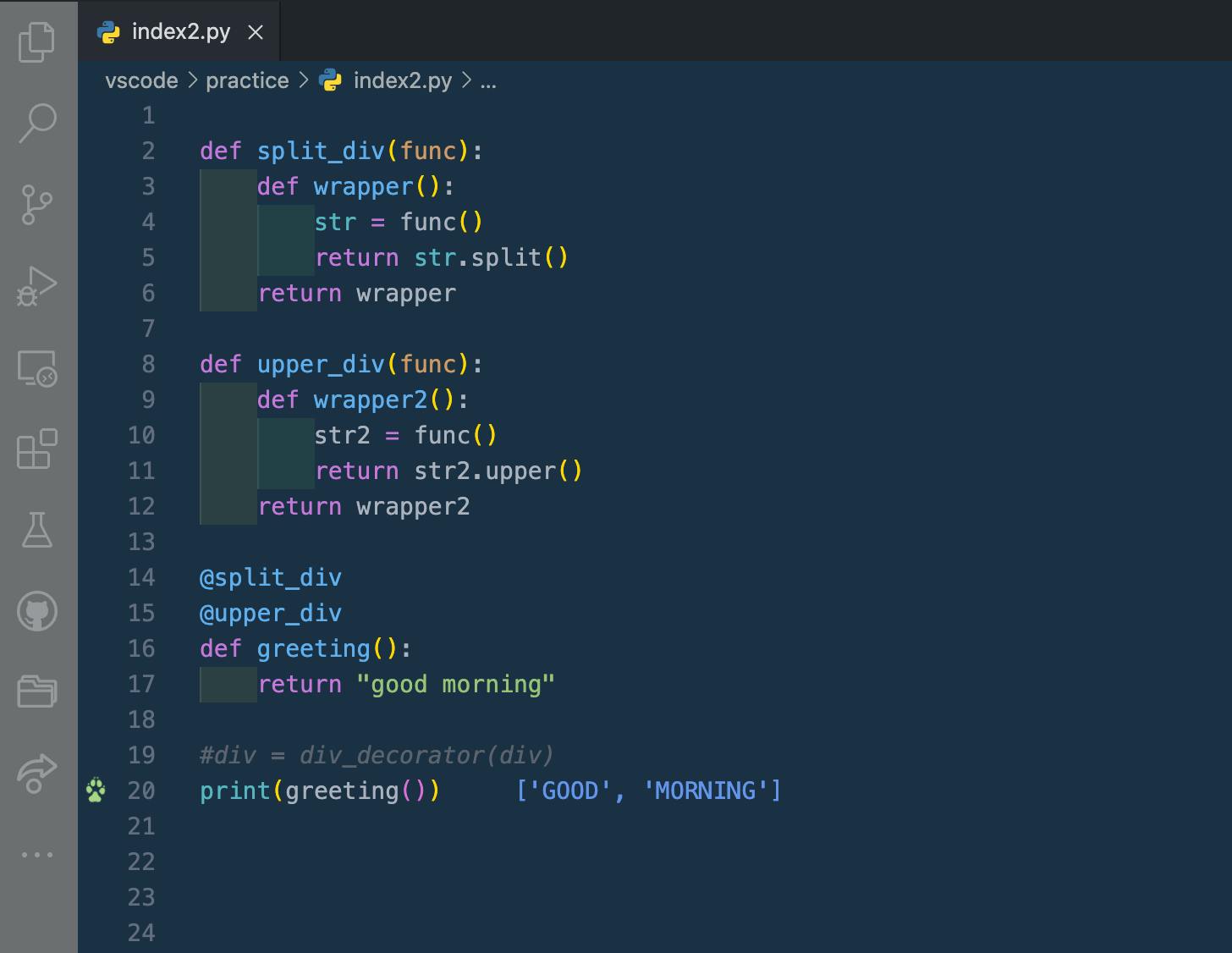
3. Using Decorators with parameters
>>Return to Menu
def greeting_decorator(expr):
def wrapper(func):
def inner():
return f"{expr}, {func()}"
return inner
return wrapper
@greeting_decorator('Hello')
def greeting():
return "good morning"
#div = div_decorator(div)
print(greeting())

4. Using a Decorator for multiple functions
>>Return to Menu
def solve_decorator(func):
def wrapper(*args):
list1 = []
list1 = args[1:]
for i in list1:
if i==0:
return "Give proper input!!!"
return func(*args)
return wrapper
@solve_decorator
def sol1(a,b):
return a/b
@solve_decorator
def sol2(a,b,c):
return a/b/c
print(sol1(10,5))
print(sol2(10,0,5))
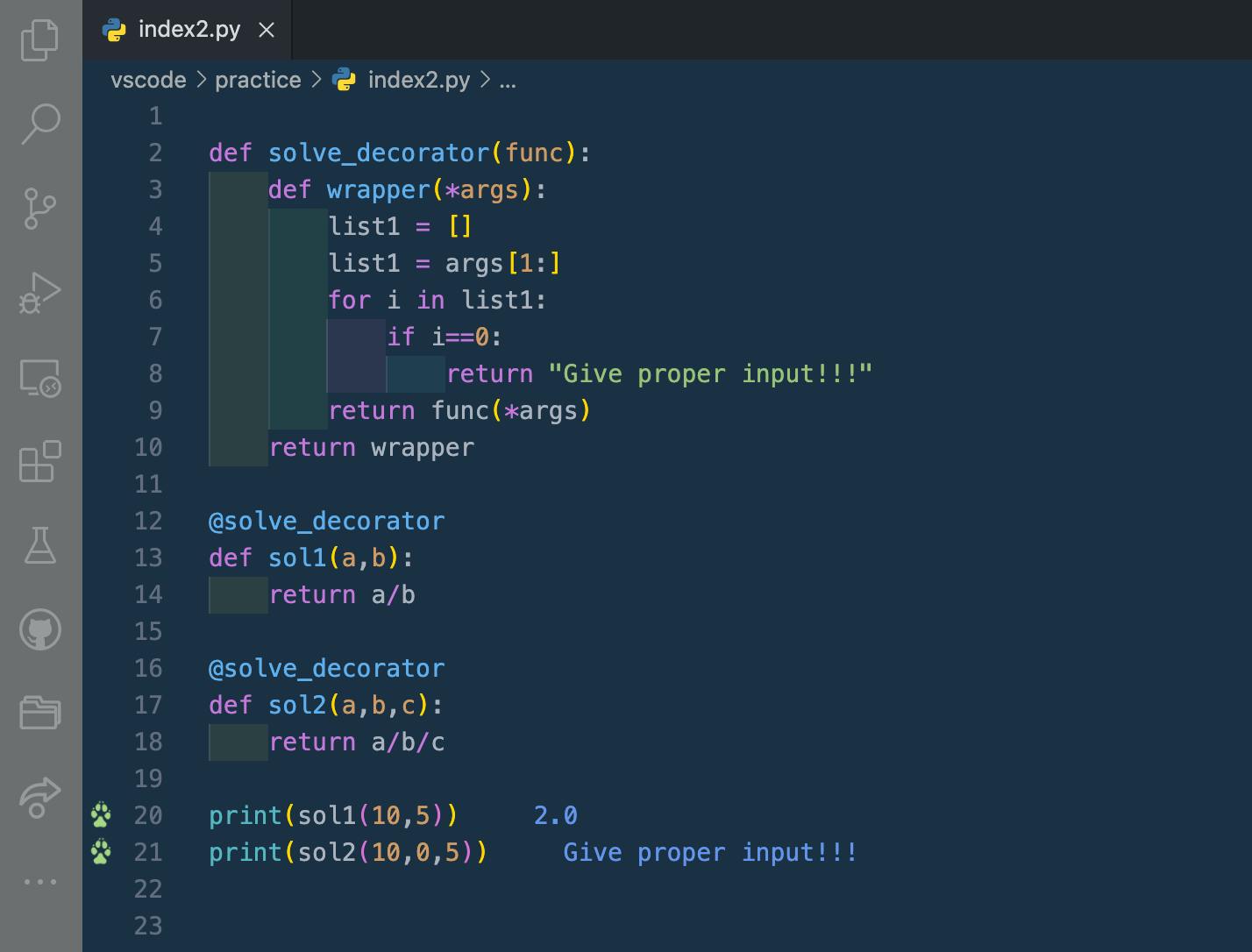
5. Using functools.wraps
>>Return to Menu
Without functools.wraps:
import functools
def decorator_greet(func):
#@functools.wraps(func)
def inner():
sttr = func()
return sttr.upper()
return inner
@decorator_greet
def greet():
return "good morning"
print(greet.__name__)
print(greet())
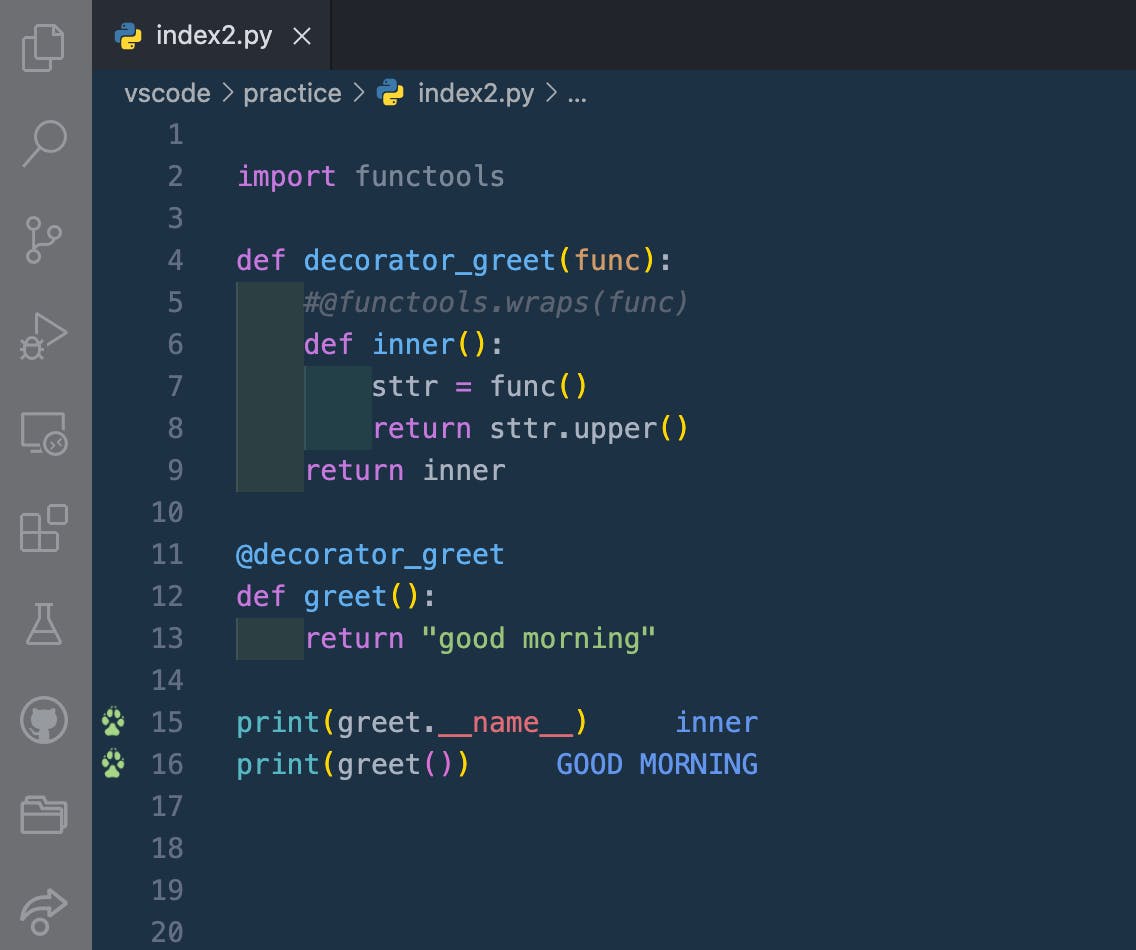 With functools.wraps:
With functools.wraps:
import functools
def decorator_greet(func):
@functools.wraps(func)
def inner():
sttr = func()
return sttr.upper()
return inner
@decorator_greet
def greet():
return "good morning"
print(greet.__name__)
print(greet())

6. Using Decorators on Class methods
>>Return to Menu
def check_user(method):
def wrapper(self_w):
if self_w.name == 'Bob':
return "Hey, you are the admin: 'Bob'."
else:
return method(self_w)
return wrapper
class Auth:
def __init__(self,name):
self.name = name
@check_user
def report(self):
return f"Entered user is: {self.name}."
user = Auth("James")
print(user.report())
user = Auth("Bob")
print(user.report())
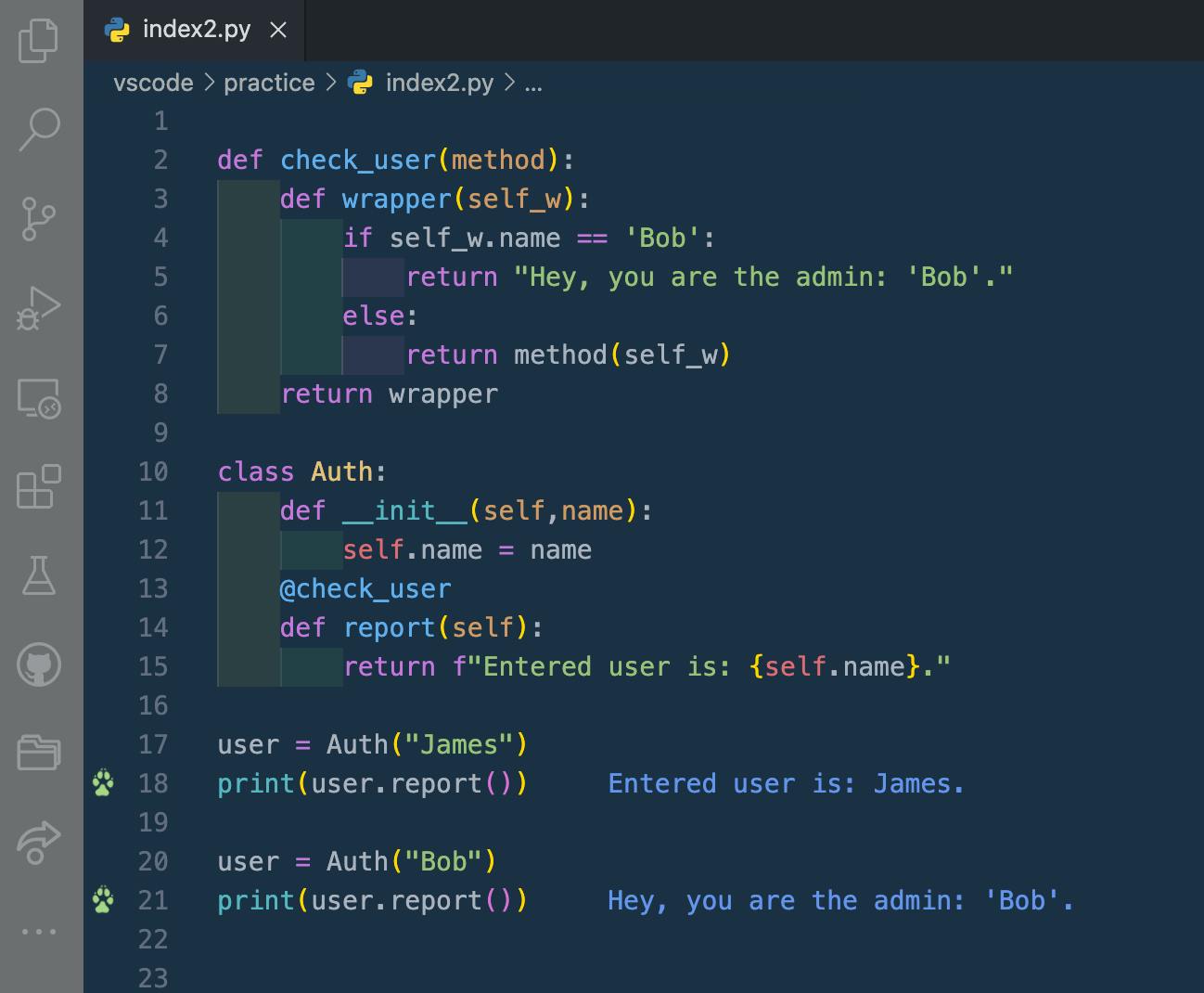
7. Call Method
>>Return to Menu
This is used to call an object in method form.
class Auth:
def __init__(self,name):
self.name = name
def __call__(self):
return f"Entered user is: {self.name}."
user = Auth("James")
print(user())
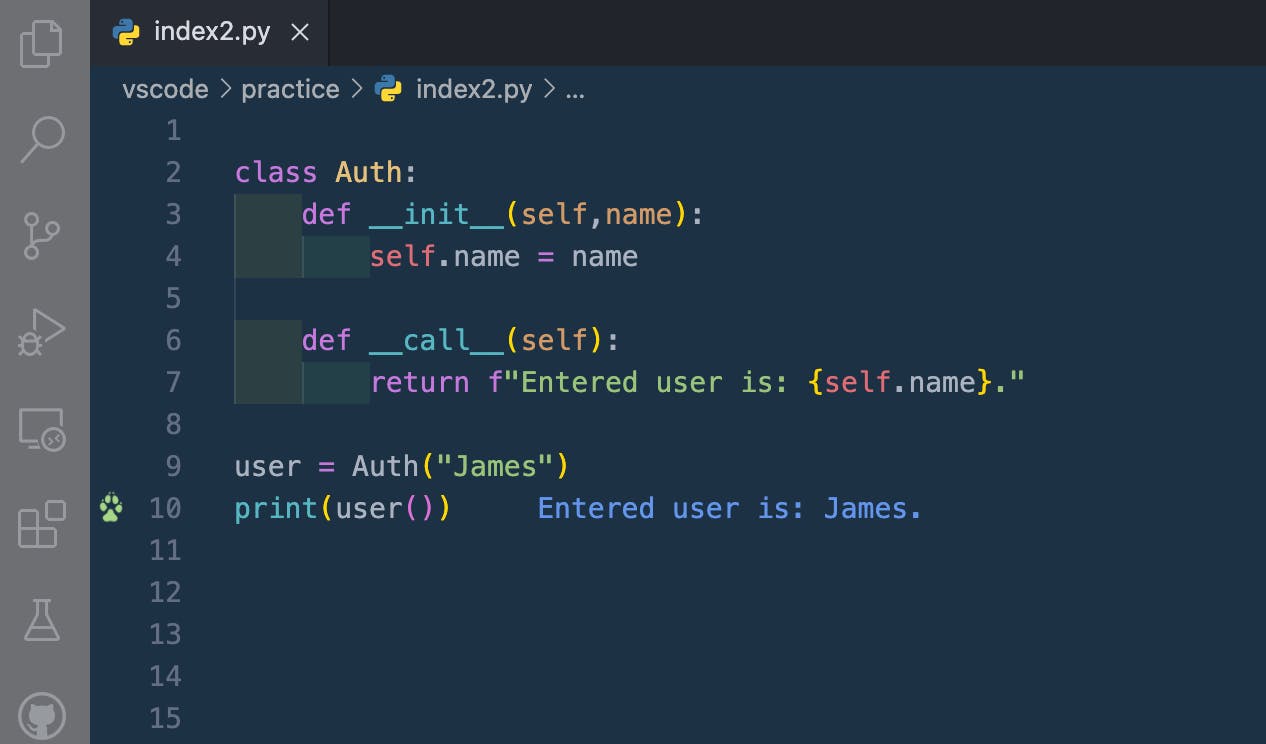
8. Defining a Decorator Class
>>Return to Menu
class Auth_decorator:
def __init__(self,func):
self.func = func
def __call__(self):
return self.func().upper()
@Auth_decorator
def greeting():
return "good morning"
print(greeting())
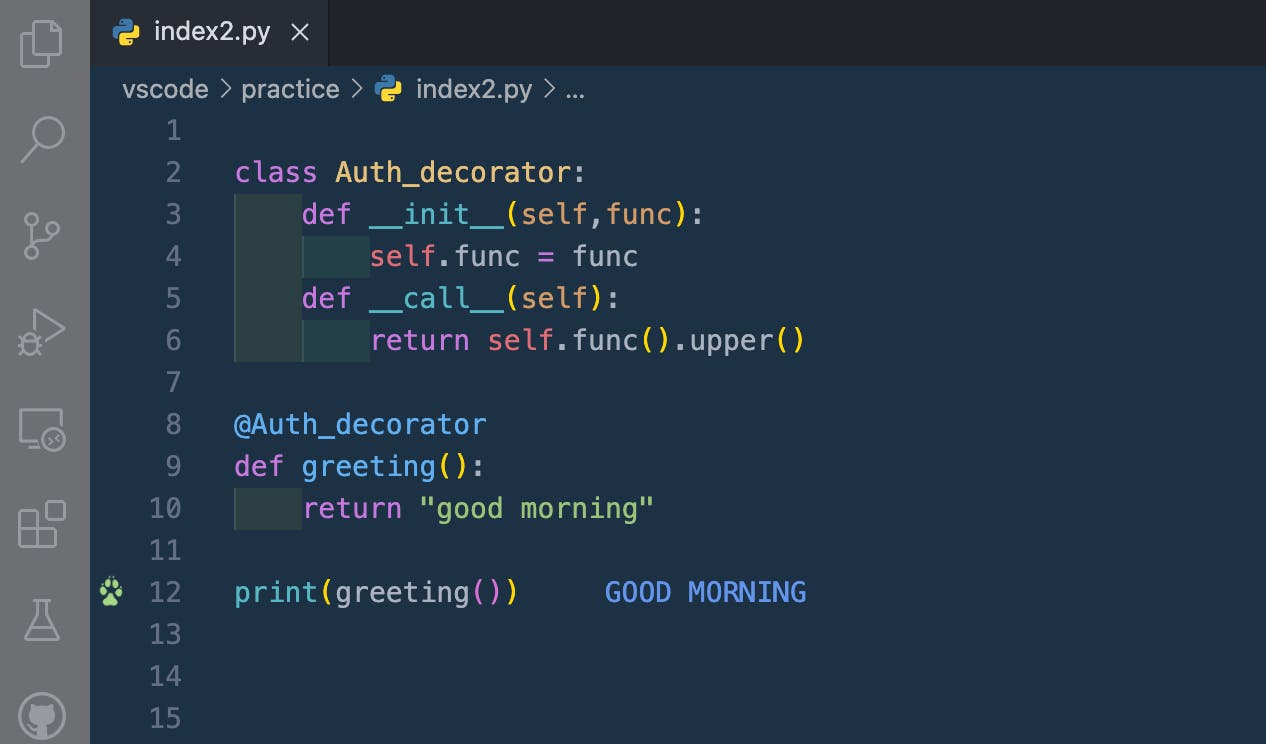
Another Example:
class Validate_decorator:
def __init__(self,func):
self.func = func
def __call__(self,*args, **kwargs):
list1 = []
list1 = args[1:]
for i in list1:
if i == 0:
return "Error: You can't divide by Zero."
return self.func(*args, **kwargs)
@Validate_decorator
def operator(a,b):
return a/b
@Validate_decorator
def operator2(a,b,c):
return a/b/c
print(operator(10,0))
print(operator(10,2))
print(operator2(10,5,0))
print(operator2(10,2,2))
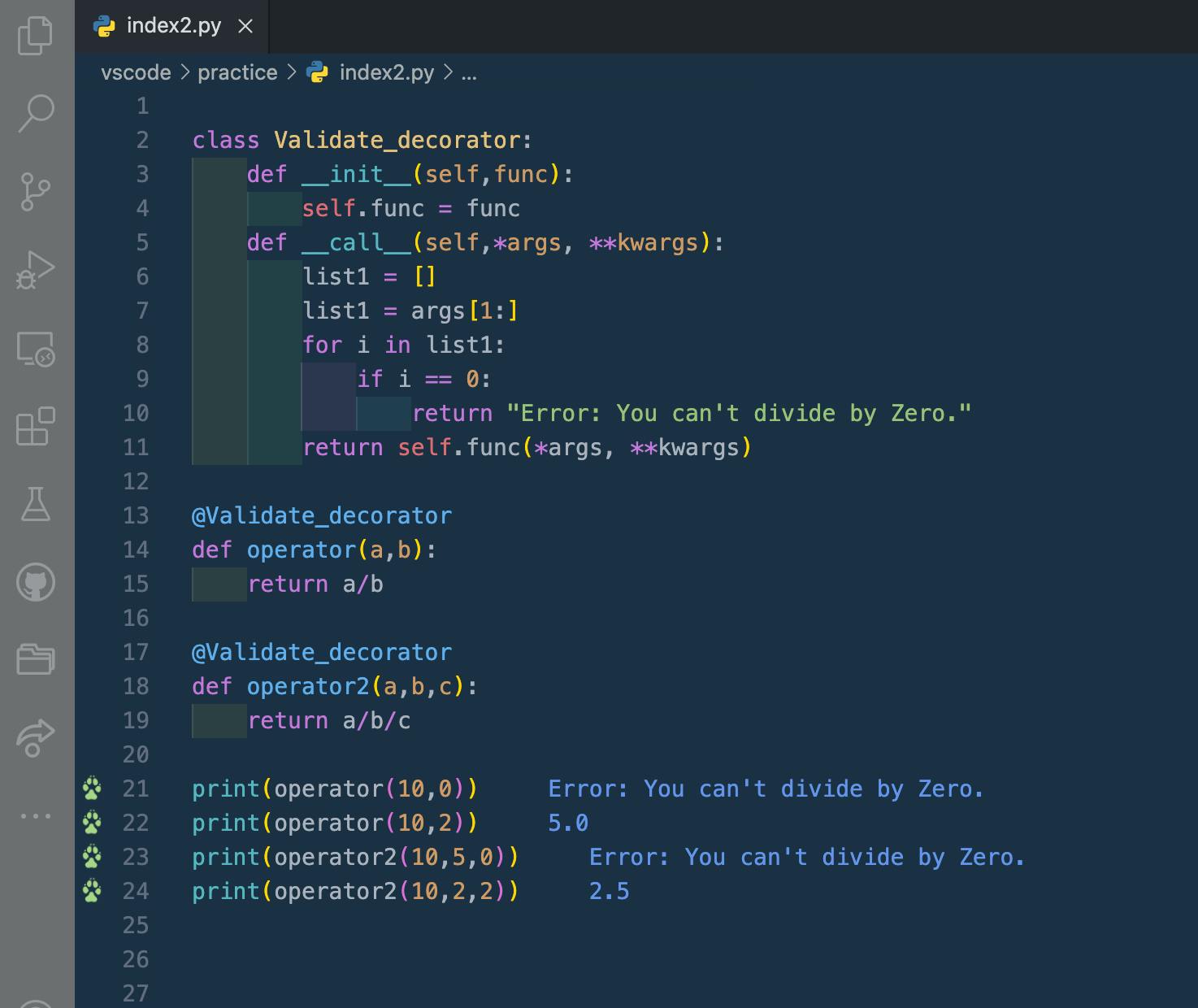
#End
Hope you enjoyed this! :) Follow me for more contents...
Get in Touch:
ifeanyiomeata.com
contact@ifeanyiomeata.com
Youtube: youtube.com/c/IfeanyiOmeata
Linkedin: linkedin.com/in/omeatai
Twitter: twitter.com/iomeata
Github: github.com/omeatai
Stackoverflow: stackoverflow.com/users/2689166/omeatai
Hashnode: hashnode.com/@omeatai
Medium: medium.com/@omeatai
© 2022

